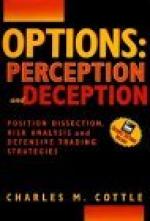|
This section contains 923 words (approx. 4 pages at 300 words per page) |

|
A virtual reality (VR) system is one that creates an illusory environment for its user. The illusion may be valid in all directions, or limited to certain angles of view; it may substitute completely for the user's actual surroundings, or be superimposed over those surroundings; the senses affected may include vision, hearing, and touch. What distinguishes VR from three-dimensional video and from stereo sound, which create partial sensory illusions, is that the illusion created by a VR system reacts to the user's own movements. A VR user may have the sensation of moving through a space, of manipulating objects in that space, and so forth.
One way of classifying VR systems is by the completeness of the illusions they create. For example:
(1) Augmented reality. Some systems seek to enhance or augment what users can see with their own eyes. A brain surgeon looking through a special...
|
This section contains 923 words (approx. 4 pages at 300 words per page) |

|


